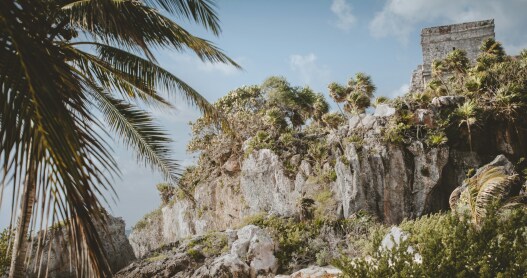There's a reason that millions of visitors flock to Tulum each year. It has a reputation for having the most spectacular natural beauty in Mexico-with jewel-toned turquoise water, fluffy white sand, and swaying palms. What could be more dreamy than that?
Of course, no visit to the town of Tulum is complete without a visit to its eponymous archaeological site, where 800-year-old stone towers and temples sit perched like sentries atop coastal clifftops, gazing down at bone-white beaches and a blue sea. The Mayan ruins at Tulum are among the top tourist attractions in Mexico. But with that popularity comes a tremendous amount of foot traffic, which has taken a toll on Tulum over the years.
According to ASUR, the official site of the airports for the southeast of Mexico, the Mexican Caribbean saw nearly 21 million international visitors in 2023. While that figure encompasses travel everywhere from Cancun down through Bacalar, it still makes this part of Mexico one of the most heavily trafficked in the country-and its hundreds of attractions, including Tulum, are suffering.
To protect the archaeological ruins and combat the effects of overtourism, the Mexican government implemented a new set of rules as of January that travelers must observe when visiting the ancient Mayan site at Tulum, according to Travel Off Path, a travel news source.
Visitors are now prohibited from consuming food and drinks purchased outside of the park during their visit in an attempt to reduce the amount of waste in the preserved park area. Those coming to view the archaeological site are also being reminded that they are not supposed to disturb the local flora. This means no picking flowers or stepping off the designated paths. Feeding local animals is also forbidden.
The list of rules isn't particularly lengthy, but the repercussions for breaking the rules can be costly, with fines of up to 5,000 pesos (US$300) depending on the level of infraction.
The rules do not clarify if visitors will be able to bring water purchased in the park's snack area into the area where the ruins are. For those who are familiar with the archaeological park, they know that there is little to no shade and that the weather can be extremely hot.
The new restrictions for visiting the Tulum ruins may seem small in the grand scheme of things, but it is an attempt to bring in some regulation, particularly as tourism to the destination is only set to increase following the opening of the new Tulum International Airport at the end of 2023.
They come as a controversial new rail project, the Maya Train (or Tren Maya) also aims to boost travel to the region.
Tulum is no stranger to overtourism. The once idyllic coastal escape has changed dramatically over the years, and sadly, not entirely for the better. What started as a sleepy, dusty village on the side of Highway 307 has exploded in the past 20 years. Visitors have transformed from budget backpackers and bohemian free spirits seeking remote stretches of sand to high-end luxury visitors to now more mass-market tourism.
What began as an eco-friendly haven has devolved into what some feel is eco-chaos with sewage runoff from overdevelopment, the destruction of the reefs and sea life, and the displacement of Indigenous communities. The current reality there is described as a skyline of construction cranes, litter on the beaches, and unwarranted high prices-overall, Tulum "ain't what it used to be."
